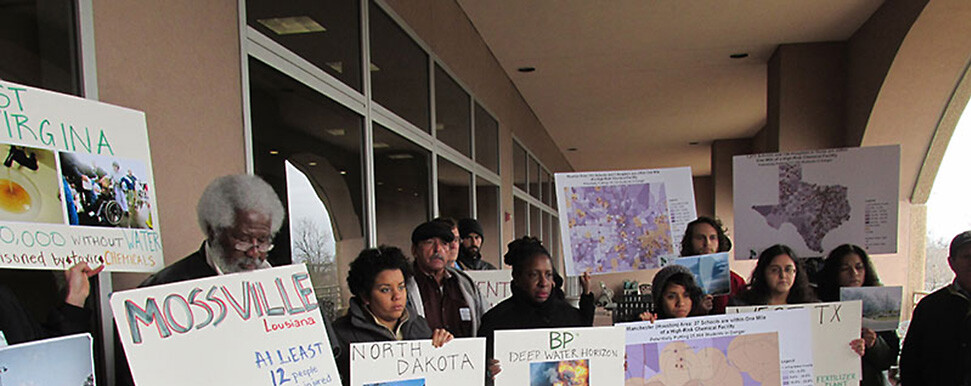
Media
February 25, 2023New map shows toxic chemical releases, fires and explosions occur every two days on average across the U.S.
Broad coalition urges EPA to enact stronger protections for workers and communities at the fenceline of hazardous facilities
PRESS RELEASE
from Coming Clean and the Environmental Justice Health Alliance for Chemical Policy Reform
Press Contact: Deidre Nelms, dnelms@comingcleaninc.org, 802-251-0203 ext. 711
A new map released by the Coalition to Prevent Chemical Disasters today shows that the toxic train derailment in East Palestine, Ohio is one of at least 224 incidents involving hazardous chemicals – including toxic releases, fires and explosions – that have occurred since January 1, 2022. The map will be periodically updated through the year to reflect new chemical incidents.
At least 475 chemical incidents have occurred since April 2020, when the coalition started maintaining its incident database, sourced from news, industry and government reports. This database is intended to underscore the startling regularity of chemical disasters in the U.S. – and motivate the need for heightened prevention policies to better protect workers and fenceline communities.
"Fenceline community members have made it clear for decades now that they refuse to accept chemical disasters as a fact of life," said Stephanie Herron, National Organizer with the Environmental Justice Health Alliance for Chemical Policy Reform. "These issues aren't new to the people who live near hazardous facilities, who have been speaking up about the urgent need to transition to safer chemicals to prevent disasters in their communities. What's new is that more people are paying attention."
On August 19, 2022, the U.S. Environmental Protection Agency (EPA) proposed the Safer Communities by Chemical Accident Prevention (SCCAP) rule, which made long-awaited revisions to the Risk Management Program (RMP), intended to prevent chemical disasters at close to 12,000 facilities that use or store highly hazardous chemicals.
On October 31, 2022, more than 100 members or allies of the Coalition to Prevent Chemical Disasters, including Coming Clean and the Environmental Justice Health Alliance for Policy Reform (EJHA), urged the EPA to further strengthen its proposal in key ways “to fully satisfy the law and the agency’s core commitments on environmental justice, worker safety, and climate change.”
In a separate comment, Coming Clean and EJHA called on the EPA to:
- Require all facilities covered by the RMP to conduct a Safer Technology and Alternatives Assessment (STAA) to determine whether there are safer chemicals, processes and technologies they could be using, and implement the identified alternatives;
- Require all RMP facilities to install backup power and take other preventative measures to ensure that they can safely operate or shut down when hurricanes, floods or tornadoes are expected;
- Allow workers at RMP facilities to stop working and/or anonymously report unsafe practices in the workplace without fear of retaliation;
- Develop a public, multilingual online database where any member of the public can access non-confidential RMP facility information and risk management plans no later than 2023; and
- Expand coverage of the RMP program to more facilities, processes and chemicals.
“Chemical disasters are not inevitable,” said Steve Taylor, Program Director of Coming Clean, “But more chemical disasters like East Palestine will continue until the industry is forced to change.”
# # #
Coming Clean is a nonprofit environmental health collaborative working to transform the chemical industry so it is no longer a source of harm, and to secure systemic changes that allow a safe chemical and clean energy economy to flourish. Our members are organizations and technical experts — including grassroots activists, community leaders, scientists, health professionals, business leaders, lawyers, and farmworker advocates — committed to principled collaboration to advance a nontoxic, sustainable, and just world for all.
The Environmental Justice Health Alliance for Chemical Policy Reform is a national network of grassroots Environmental and Economic Justice organizations and advocates in communities that are disproportionately impacted by toxic chemicals from legacy contamination, ongoing exposure to polluting facilities and health-harming chemicals in household products. EJHA supports a just transition towards safer chemicals and a pollution-free economy that leaves no community or worker behind.
